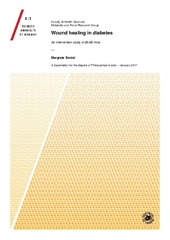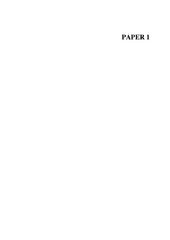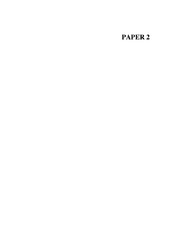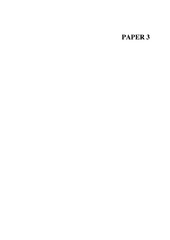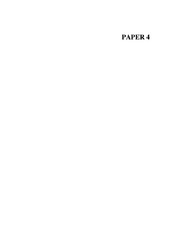| dc.contributor.advisor | Jenssen, Trond Geir | |
| dc.contributor.author | Berdal, Margrete | |
| dc.date.accessioned | 2017-07-12T12:02:15Z | |
| dc.date.available | 2017-07-12T12:02:15Z | |
| dc.date.issued | 2017-06-09 | |
| dc.description.abstract | The prevalence of diabetes is increasing globally. Certain microvascular and macrovascular complications such as cardiovascular disease, retinopathy, nephropathy, neuropathy, and impaired wound healing are associated with the disease. Prolonged exposure to hyperglycaemia plays an important role in their development. Glucose reacts with macromolecules including proteins, lipoproteins, and nucleic acids over time to form irreversible advanced glycation end products (AGEs) that could modify both extracellular matrix and plasma proteins and also alter cellular functions.
In skin of animals and humans with diabetes, increased cross-linking of collagen by glycation and subsequent accumulation of AGEs occur. This is associated with more stiffness and increased insolubility, and could potentially contribute to inhibition of cellular infiltration in the wound, blockage of angiogenesis and attenuation of wound contraction and closure. Furthermore, wound studies in diabetes have demonstrated an aberrant course of inflammation. Macrophages are crucial in inflammation and wound healing, and studies have revealed impaired functioning of these cells in diabetes.
In order to study wound healing, we used leptin receptor deficient db/db mice, the most widely used animal model for type 2 diabetes. The aims of our studies were to: 1) examine the effects of a macrophage stimulant, water-soluble aminated beta-1,3-D-glucan (AG) with or without additional glucose-lowering treatment with insulin, 2) study potential dose-response effects of AG, 3) investigate if there was an association between wound healing and metabolic variables, and 4) explore potential effects of aminoguanidine, an inhibitor of AGE formation.
In mice that were topically applied with AG, wound closure improved significantly compared to placebo treated controls. The addition of subcutaneous insulin treatment did not further accelerate wound healing. Subcutaneous insulin treatment alone did not promote wound healing. It lowered plasma glucose significantly, but did not normalise it. Experiments on different frequencies of topical AG administration onto the wound revealed dose-dependent effects on wound healing. Wounds applied with multiple AG doses (five or more) closed comparably to growth factor treatment (combined treatment with platelet-derived growth factor and insulin-like growth factor 1) during the early phase (days 0-17) of wound repair. In a separate study, wound closure did not show a significant association with plasma glucose, whereas change in body weight predicted wound healing in our model. Aminoguanidine, either administered topically or systemically, did not improve wound healing. However, the AGE-inhibitor was associated with favourable metabolic changes over time, that is, percentage weight loss and glycated hemoglobin A1c tended to decrease dose-dependently. | en_US |
| dc.description.abstract | Betaglukaner kan bedre sårtilheling ved diabetes
Studier som er utført på mus ved UiT Norges arktiske universitet, viser at betaglukaner kan bedre sårtilhelingen ved diabetes.
Diabetes er en sykdom som rammer stadig flere mennesker i Norge. Ved sykdommen er sukkerinnholdet i blodet for høyt på grunn av mangel på eller for dårlig effekt av insulin. Høyt blodsukker er skadelig for kroppen og kan gi langtidskomplikasjoner hvis det ikke behandles. Blant disse komplikasjonene er svekket sårtilheling. Dette kan i verste fall føre til amputasjoner når sår ikke gror.
For at sår skal gro, kreves ulike typer celler, deriblant makrofager. Makrofagene skiller ut vekstfaktorer i såret som fremmer tilhelingsprosessen. Forskning viser at makrofager fungerer dårligere enn normalt ved diabetes. Dessuten skiller de ut mindre mengder vekstfaktorer enn mennesker og dyr som ikke har sykdommen.
Tidligere studier har vist at betaglukaner stimulerer makrofager til å fungere bedre. Med dette som utgangspunkt har vi studert effekter av betaglukan og vekstfaktorer på sårtilheling. I eksperimentene ble mus tilført enten betaglukan eller vekstfaktorer i såret. Resultatene viser forbedret sårtilheling ved behandlingen. Resultatene indikerer dessuten at blodsukkernivåene ikke påvirker sårtilhelingen i denne modellen.
Forskning på dyremodeller er viktig for å belyse årsaker til svekket sårtilheling ved diabetes. Musemodellen som vi har anvendt i studiene våre, benyttes av diabetesforskere over hele verden. Våre studier bidrar til ny kunnskap om denne modellen som andre forskere kan få nytte av i fremtiden. | en_US |
| dc.description.doctoraltype | ph.d. | en_US |
| dc.description.popularabstract | Beta glucans can improve wound healing in diabetes
Studies in mice at UiT The Arctic University of Norway show that beta glucans can improve wound healing in diabetes.
Diabetes is a disease with increasing occurrence. A characteristic of the disease is that the sugar content in the blood is too high. This is due to the lack of or insufficient effect of insulin. High blood sugar is harmful to the body and can cause chronic complications if not treated. Among these complications is impaired wound healing which may lead to amputations when wounds do not heal.
For wounds to heal, different types of cells are required, including macrophages. The macrophages release growth factors into the wound, which promote the healing process. Studies demonstrate that macrophage function is impaired in diabetes. Moreover, they release smaller amounts of growth factors than humans and animals that do not have the disease.
Experiments have shown that beta glucans improve macrophage function. Therefore, we studied the effects of beta glucan and growth factors on wound healing. In the experiments, diabetic mice were applied with either beta glucan or growth factors onto the wound. Wound healing was improved in both treatment groups. The results also indicated that blood sugar levels did not affect wound healing in this model.
Research in animal models is important to elucidate potential causes of impaired wound healing in diabetes. Diabetes researchers worldwide also use the mouse model as included in our experiments. Our studies contribute to new knowledge about this model that other researchers can benefit from in the future.
Margrete Berdal, phone: 48 15 97 35, email: margrete.berdal@uit.no | en_US |
| dc.description.sponsorship | Diabetesforbundet
Norges forskningsråd | en_US |
| dc.identifier.uri | https://hdl.handle.net/10037/11251 | |
| dc.language.iso | eng | en_US |
| dc.publisher | UiT The Arctic University of Norway | en_US |
| dc.publisher | UiT Norges arktiske universitet | en_US |
| dc.rights.accessRights | openAccess | en_US |
| dc.rights.holder | Copyright 2017 The Author(s) | |
| dc.rights.uri | https://creativecommons.org/licenses/by-nc-sa/3.0 | en_US |
| dc.rights | Attribution-NonCommercial-ShareAlike 3.0 Unported (CC BY-NC-SA 3.0) | en_US |
| dc.subject | VDP::Medisinske Fag: 700::Basale medisinske, odontologiske og veterinærmedisinske fag: 710 | en_US |
| dc.subject | VDP::Medical disciplines: 700::Basic medical, dental and veterinary science disciplines: 710 | en_US |
| dc.title | Wound healing in diabetes. An intervention study in db/db mice | en_US |
| dc.type | Doctoral thesis | en_US |
| dc.type | Doktorgradsavhandling | en_US |


 English
English norsk
norsk